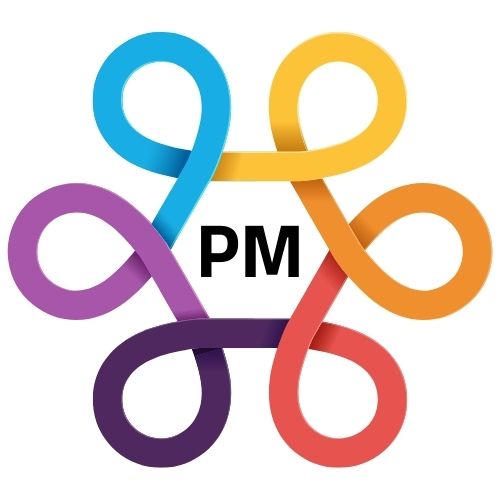Search Engine Optimisation Audit Checklist for 2025

Search Engine Optimization Audit Checklist for 2025...
The SEO landscape in 2025 demands a comprehensive and forward-thinking audit approach. With AI advancements, evolving user behavior, and Google's emphasis on user experience, your audit checklist needs to reflect these changes. Here’s a detailed guide to ensure your website is primed for SEO success in the years to come.
I. Technical SEO Audit:
Mobile-First Indexing & Responsiveness:
☐ Verify website is fully responsive across all devices.
☐ Test page speed and performance on mobile using Google PageSpeed
Insights.
☐ Ensure mobile usability is flawless (touch targets, viewport
configuration).
Site Speed & Core Web Vitals:
☐ Analyze Core Web Vitals (LCP, FID, CLS) and address any issues.
☐ Optimize images, videos, and other media for faster loading.
☐ Implement browser caching and content delivery networks (CDNs).
☐ Check for and remove any render blocking javascript.
Site Architecture & Crawlability:
☐ Review site structure for logical hierarchy and easy navigation.
☐ Ensure XML sitemap is accurate and submitted to search engines.
☐ Check robots.txt for proper directives and avoid blocking essential
pages.
☐ Verify correct use of canonical tags to prevent duplicate content issues.
☐ Check for and fix broken links (internal and external).
Security & HTTPS:
☐ Confirm website is secured with HTTPS and a valid SSL certificate.
☐ Check for mixed content warnings and resolve them.
Structure Data & Schema Markup:
☐ Audit existing schema markup for accuracy and completeness.
☐ Implement relevant schema types (e.g., product, article, FAQ) to enhance
rich snippets.
☐ Verify structured data implementation with Google's Rich Results Test.
Internationalization (if applicable):
☐ Check hreflang tags for correct implementation and language targeting.
☐ Verify proper use of country-specific domains or sub-directories.
Accessibility:
☐ Verify website adheres to WCAG guidelines.
☐ Test for proper alt text on images, and sufficient color contrast.
II. On-Page SEO Audit:
Content Quality & Relevance:
☐ Evaluate content for E-E-A-T (Experience, Expertise, Authoritativeness,
Trustworthiness).
☐ Assess content for depth, accuracy, and user intent fulfillment.
☐ Ensure content is original and free from plagiarism.
☐ Analyze the use of multimedia content, and it's optimization.
Keyword Optimization:
☐ Review keyword strategy for relevance and alignment with user intent.
☐ Analyze keyword placement in titles, headings, meta descriptions, and
content.
☐ Assess the use of long-tail keywords and semantic variations.
☐ Perform competitor keyword analysis.
Title Tags & Meta Descriptions:
☐ Ensure title tags are concise, compelling, and keyword-rich.
☐ Craft meta descriptions that accurately reflect content and encourage
clicks.
Header Tags (H1-H6):
☐ Verify proper use of header tags to structure content and improve
readability.
☐ Ensure H1 tags accurately reflect page content and target primary keywords.
Image Optimization:
☐ Check image file sizes and optimize for faster loading.
☐ Ensure images have descriptive alt text and file names.
Internal Linking:
☐ Review internal linking structure for relevance and anchor text
optimization.
☐ Ensure internal links guide users to relevant content and improve site
navigation.
URL Structure:
☐ Verify URL structures are clean, concise, and keyword-rich.
☐ Ensure URLs are consistent and user-friendly.
III. Off-Page SEO Audit:
Back-Link Profile:
☐ Analyze backlink profile for quality, relevance, and diversity.
☐ Identify and disavow toxic or low-quality backlinks.
☐ Assess competitor backlink strategies.
☐ Check for lost backlinks, and attempt to regain them.
Social Media Signals:
☐ Evaluate social media presence and engagement.
☐ Analyze social sharing activity and its impact on SEO.
Local SEO (if applicable):
☐ Verify Google Business Profile is accurate and up-to-date.
☐ Ensure consistent NAP (Name, Address, Phone Number) citations across the web.
☐ Analyze online reviews and ratings.
Brand Mentions:
☐ Track brand mentions, and check for opportunities to turn them into backlinks.
IV. User Experience (UX) & Content Audit:
User Intent Analysis:
☐ Analyze content to ensure it matches user intent.
☐ Track user behavior metrics (bounce rate, dwell time) to assess user
satisfaction.
Content Engagement:
☐ Analyze content for engagement metrics (comments, shares, time on page).
☐ Evaluate the use of interactive content elements.
Voice Search Optimization:
☐ Assess content for conversational language and long-tail keyword
targeting.
☐ Ensure content answers common questions directly.
V. AI & Automation:
AI-Powered Tool Integration:
☐ Evaluate the use of AI-powered SEO tools for analysis and automation.
☐ Ensure AI-generated content is accurate and adheres to E-E-A-T guidelines.
Predictive Analytics:
☐ Utilize predictive analytics to forecast SEO trends and adapt strategies.
By conducting a thorough audit using this checklist, you can identify areas for improvement and ensure your website is well-positioned for SEO success in 2025 and beyond.
